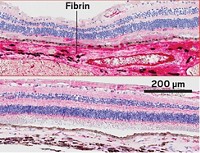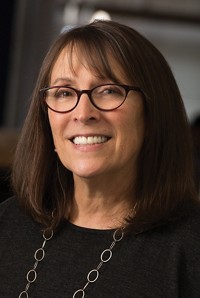Advertisement
Grab your lab coat. Let's get started
Welcome!
Welcome!
Create an account below to get 6 C&EN articles per month, receive newsletters and more - all free.
It seems this is your first time logging in online. Please enter the following information to continue.
As an ACS member you automatically get access to this site. All we need is few more details to create your reading experience.
Not you? Sign in with a different account.
Not you? Sign in with a different account.
ERROR 1
ERROR 1
ERROR 2
ERROR 2
ERROR 2
ERROR 2
ERROR 2
Password and Confirm password must match.
If you have an ACS member number, please enter it here so we can link this account to your membership. (optional)
ERROR 2
ACS values your privacy. By submitting your information, you are gaining access to C&EN and subscribing to our weekly newsletter. We use the information you provide to make your reading experience better, and we will never sell your data to third party members.
Start-ups
With $40 million, Rubedo Life Sciences aims to clear away aging cells
Start-up will put the funds toward drugs for inflammatory and fibrotic diseases
by Rowan Walrath
April 19, 2024
Stanford University-trained neuroscientist Marco Quarta sees aging as a through line in his work. First came his postdoctoral work at Stanford’s Paul F. Glenn Center for the Biology of Aging, then an epigenetics start-up he cofounded called Turn Biotechnologies. Now, Quarta is heading up a new start-up, Rubedo Life Sciences. The 27-person firm just brought in $40 million in a series A financing round co-led by Khosla Ventures and Ahren Innovation Capital. The start-up will develop medicines for aging cells that drive skin and fibrotic diseases.

Founded in 2018, Rubedo has developed small molecules designed to target senescent cells—aging cells that do not die but rather accumulate, a phenomenon thought to drive inflammation and a wide variety of age-related diseases (Cell 2017, DOI: 10.1016/j.cell.2017.02.031).
Rubedo’s lead drug candidate, RLS-1496, is a topical medicine meant to remove these aging cells from skin lesions in chronic atopic dermatitis and chronic psoriasis. Quarta plans to use the new series A funds to run a Phase 1 basket trial to ensure that RLS-1496 is safe in both conditions and generate some early efficacy data.
“Senescent cells act like ‘cellular factories’ of a large number of pathological, pro-inflammatory factors, like cytokines,” Quarta says. “Instead of targeting one factor at a time, removing those senescent cells clears . . . a significant source of those factors, enabling the shift from a maladaptive environment into a pro-regenerative response.”
If the Phase 1 study succeeds, it’ll be an easy way to validate Rubedo’s approach overall, Quarta says. Because the skin is exposed, researchers should be able to monitor it both visually and via minimally invasive biopsies, which would de-risk Rubedo’s future clinical trial plans.
The hope is that RLS-1496 will be able to remove the senescent cells permanently—or at least for a long time, assuming there are no additional injuries or stressors to the skin—which would allow patients to take the medication intermittently, instead of the daily dosing schedule that underpins the current standard of care for chronic atopic dermatitis and chronic psoriasis.
“We found these dermatological indications to be a lower-hanging fruit, for a starting point,” Quarta says. “Then, we can move beyond, to other tissues and organs.” Rubedo will also eventually move from a topical formulation to a pill, he says.
Rubedo’s next indication is idiopathic pulmonary fibrosis (IPF), a disorder involving lung scarring. Quarta’s hypothesis is that here as well, aging cells are driving chronic inflammation, resulting in the buildup of scar tissue. He describes a disease cascade that starts with damage and cell stress, then a depletion of lung epithelial progenitor stem cells. Immune cells come in to try to clear away the damage, but instead, they linger, becoming pathological themselves. Eventually, the immune cells recruit fibroblasts into myofibroblasts, which secrete collagen and lead to scarring.
Quarta hopes Rubedo will be able to engineer small molecules that are so safe that the start-up can expand their uses far beyond inflammatory and fibrotic diseases. A close follower of the growing longevity space—Quarta cofounded a think tank that promotes interest and investment in antiaging—he thinks there might eventually be a use case for healthy people to prevent senescence entirely.
“The ultimate goal and application is for people who are healthy and younger to prevent, or to postpone, the onset of diseases,” Quarta says. “Targeting these underlying drivers of initiation and progression of diseases can really lead to this change of trajectory of disease. That’s the ultimate goal of extending ‘healthspan,’ which is the ultimate potential of longevity medicine, or as we see it, medicine 3.0.”





Join the conversation
Contact the reporter
Submit a Letter to the Editor for publication
Engage with us on Twitter